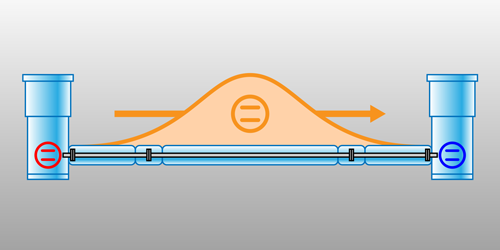Connecting Qubits via a Cryogenic Link
Powerful quantum computers could be built by linking together multiple superconducting quantum processors. Promising schemes involve exchanging visible or infrared photons through optical fibers and converting such photons into microwave photons that can couple to the superconducting qubits. But the microwave-to-optical transduction can spoil the fidelity of the quantum states. Now, Paul Magnard of the Swiss Federal Institute of Technology (ETH) in Zurich and colleagues have built and tested a link that bypasses the need for frequency conversion [1]. This link directly transfers qubit states encoded in microwave photons from one circuit to another located meters away.
To create their network, the team set up two identical superconducting circuits, each made of a single qubit, and housed them in separate refrigerators about 5 m apart. They connected the refrigerators via an aluminum waveguide, which they nestled in four layers of concentric insulating sleeves arranged like a set of Russian dolls. After cooling the waveguide and the qubits to below 20 mK, the team wrote a quantum state in one qubit, transferred the state across the waveguide, and read it out from the other qubit. Magnard and colleagues showed that they could repeatedly transfer quantum states with high fidelity and also entangle the remote qubits on demand.
The researchers say that their setup could be easily incorporated into a variety of existing communication schemes using microwaves. They also suggest that the link could be stretched to hundreds of meters. In the near term, the team will use this approach to distribute quantum processing tasks between circuits with multiple qubits, which would be an important step in realizing large-scale, modular quantum computing architectures.
–Christopher Crockett
Christopher Crockett is a freelance writer based in Arlington, Virginia.
References
- P. Magnard et al., “Microwave quantum link between superconducting circuits housed in spatially separated cryogenic systems,” Phys. Rev. Lett. 125, 260502 (2020).




